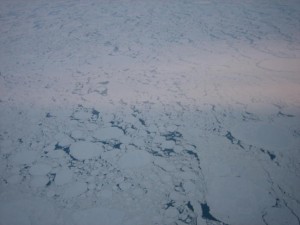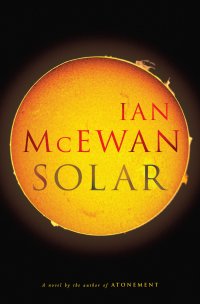That’s the rate that people are releasing carbon to the atmosphere from fossil fuel combustion and deforestation today. I know, it’s apples and oranges; carbon in the form of oil is more immediately toxic to the environment than it is as CO2 (although CO2 may be more damaging on geologic time scales). But think of it — five thousand spills like in the Gulf of Mexico, all going at once, each releasing 40,000 barrels a day, every day for decades and centuries on end. We are burning a lot of carbon!
Archives for 2010
Atlantic Tropical Cyclone Records – Trends and Ephemerality
Guest Commentary from Urs Neu
To understand the influence of climate change on tropical cyclone and hurricane activity, it is crucial to know how this activity has varied in the past. There have been a number of interesting new studies of Atlantic tropical cyclones (TCs) and hurricanes (tropical cyclones with maximum sustained winds exceeding 74 miles per hour) since my review of the topic a couple years ago (see here and here). These newer studies underscore that, while our knowledge continues to improve in this area, key uncertainties persist. In particular, it remains very difficult to confidently estimate trends in the past.
In assessing past trends, one must distinguish between two distinct time intervals: 1) the period of historical observations (mainly after 1850), and 2) the earlier period for which TC activity can only be reconstructed using proxy data. Furthermore, we have to distinguish between trends in tropical cyclone (TC) number and TC intensity–the latter measure is particularly important from the standpoint of impacts. There is no a priori reason to expect these quantities to vary in concert, either in the past, or in the future. Unfortunately, uncertainties are much greater for intensity than for counts.
In this article, I will review our current understanding of Atlantic TC and hurricane trends with respect to: A) the historical record of basin-wide TC numbers; B) the historical record of hurricanes and TC intensity; C) distant past proxy estimates of TC (primarily, hurricane only) counts; and D) distant past proxy measures of TC/hurricane intensity. I will conclude with a discussion of current methods for forecasting Atlantic hurricane activity.
[Read more…] about Atlantic Tropical Cyclone Records – Trends and Ephemerality
Recent trends in CO2 emissions
Guest commentary by Corinne Le Quéré, Michael R. Raupach, and Joseph G. Canadell
There is a letter in Nature Geoscience this month by Manning et al (sub. reqd.) “Misrepresentation of the IPCC CO2 emission scenarios” discussing some recent statements about the growth rates of CO2 emissions compared to the IPCC scenarios that informed the climate modeling in the last IPCC report. In it they refer to results published by us and colleagues in a couple of recent papers (Raupach et al. 2007; Le Quéré et al. 2009), and to statements made by others on the basis of our results (Ganguly et al. 2009; Anderson et al. 2008; Reichstein 2010). Specifically, Manning et al object to the claim that “current CO2 emissions from fossil fuel burning were higher than the values used in climate projections by the IPCC”.
We agree with the Manning et al’s main point, and appreciate the chance to provide some clarification on the graph in question and subsequent use of our result. To be specific, recent emissions were not higher than each and every one of the climate projections by the IPCC, as has been claimed by some other studies citing our work, although they were near the top end of the range.
So what is the claim of ‘misrepresentation’ based on?
[Read more…] about Recent trends in CO2 emissions
A conclusion of the 4th International Polar Year
This week, the “Oslo Science conference” the largest conference ever -it was claimed – was held on polar sciences at Lillestrøm, just outside Oslo. Some of the web-casts from that meeting are worth watching, and I found especially the talk by David Barber (“On Thin Ice: The Arctic and Climate Change”, video link here) both a bit alarming as well as fascinating.
Storms and snow affect sea-ice growth, since a layer of snow on top of the ice insulates against the cold atmosphere and prohibits ice growth. Winds and extra mass can lead to break-up, and the amount of multi-annual ice is lower than expected; it has decayed and ‘rotted’. A mission with the Canadian ice breaker apparently managed to break ice slabs much thicker than expected, due to weaker ice. Also more recent reversals of the Beaufort gyre, unexpected long swells, and new ice on top of clumps of old ice fooling the satellites to think there is more multi-year ice than really the case, are just part of the story. In the mean while, the sea-ice for this season from NSIDC is on a low note.

Some claim that reduced sea-ice can explain cold winters in the northern hemisphere, but I’m not yet convinced. The cold winters are due to weak Arctic Oscillation, and hence a shift in the air masses bringing frigid polar southwards, and this air is replaced by milder air in the polar region. Hence, a shift in the wind system as well as milder temperatures may favour less Arctic sea-ice.
The Antarctic sea-ice cover has increased on average in the last 30 years, but not everywhere. Both the general increase around East Antarctica and the large decrease off West Antarctica are attributed to the ozone hole and corresponding changes in the Southern Annular Mode (SAM, or the ‘Antarctic Oscillation’), though this probably doesn’t explain what is happening in winter. There is no clear polar amplification observed over Antarctica, such as seen as in the Arctic, and one explanation for this may be that the Antarctic continent has large ice sheets with enormous thermal inertia. But ice core data suggest that there have been amplification there in the past too. Nevertheless, the Arctic is characterized by a polar ocean with retreating sea-ice in the northern hemisphere. In both cases, changing air masses and the winds are important for inter-annual to inter-decadal variations, both in explaining cold winters over Eurasia and sea-ice around Antarctica.
Climate Change Commitment II
A couple of months ago, we discussed a short paper by Matthews and Weaver on the ‘climate change commitment’ – how much change are we going to see purely because of previous emissions. In my write up, I contrasted the results in M&W (assuming zero CO2 emissions from now on) with a constant concentration scenario (roughly equivalent to an immediate cut of 70% in CO2 emissions), however, as a few people pointed out in the comments, this exclusive focus on CO2 is a little artificial.
[Read more…] about Climate Change Commitment II
On attribution
How do we know what caused climate to change – or even if anything did?
This is a central question with respect to recent temperature trends, but of course it is much more general and applies to a whole range of climate changes over all time scales. Judging from comments we receive here and discussions elsewhere on the web, there is a fair amount of confusion about how this process works and what can (and cannot) be said with confidence. For instance, many people appear to (incorrectly) think that attribution is just based on a naive correlation of the global mean temperature, or that it is impossible to do unless a change is ‘unprecedented’ or that the answers are based on our lack of imagination about other causes.
In fact the process is more sophisticated than these misconceptions imply and I’ll go over the main issues below. But the executive summary is this:
- You can’t do attribution based only on statistics
- Attribution has nothing to do with something being “unprecedented”
- You always need a model of some sort
- The more distinct the fingerprint of a particular cause is, the easier it is to detect
Note that it helps enormously to think about attribution in contexts that don’t have anything to do with anthropogenic causes. For some reason that allows people to think a little bit more clearly about the problem.
[Read more…] about On attribution
Ocean heat content increases update
There is a new paper in Nature this week on recent trends in ocean heat content from a large group of oceanographers led by John Lyman at PMEL. Their target is the uncertainty surrounding the various efforts to create a homogenised ocean heat content data set that deals appropriately with the various instrument changes and coverage biases that have plagued previous attempts.
We have discussed this issue a number of times because of its importance in diagnosing the long term radiative imbalance of the atmosphere. Basically, if there has been more energy coming in at the top than is leaving, then it has to have been going somewhere – and that somewhere is mainly the ocean. (Other reservoirs for this energy, like the land surface or melting ice, are much smaller, and can be neglected for the most part).
[Read more…] about Ocean heat content increases update
What we can learn from studying the last millennium (or so)
With all of the emphasis that is often placed on hemispheric or global mean temperature trends during the past millennium, and the context they provide for interpreting modern warming trends, one thing is often lost in the discussion: space matters as much as time. Indeed, it is likely that the regional patterns of past climate changes, rather than simple hemispheric or global mean temperature trends, will best inform our understanding of the dynamical mechanisms involved. Since much of the uncertainty in future projections relates to regional climate change impacts, it makes particular sense to focus on those changes in the past that involve regional changes and the underlying mechanisms behind them.
For instance, melting of the cryosphere (and consequent rises in sea level), subtle shifts in drought and rainfall patterns, and extreme events, are all regional effects that could be important threats to ecosystems and our environment. Such changes are often associated with phenomena like ENSO or the North Atlantic Oscillation. Yet there remain large uncertainties about how such mechanisms will respond to anthropogenic climate change.
[Read more…] about What we can learn from studying the last millennium (or so)
Solar

Claude Allègre: The Climate Imposter
Guest Commentary by Georg Hoffmann
In mathematical proofs, it’s a well-known fact that if at some point you divide by zero accidentally or on purpose, then you end up being able to prove absolutely anything you want – for instance, that 2+2=5 or that 1+1=0. The same phenomena appears to govern any number of publications that conclude that climate science is all a fraud – at some point, an impossible calculation is performed and from then on, anything (and everything) can be proven. Critical thinking appears to vanish.
The latest example is that of Claude Allègre – whose recent book “The climate imposture” would have you believe at least six impossible things before breakfast and a great many more before dinner. This is notable because Allègre is one of the most eminent figures in science communication in France, Academie de Sciences member, Crafoord prize winner, former minister of education and research and a fixture on the late night talk shows in France (including a topical satirical version of the ‘muppets’). One might expect a certain degree of rigour from an author with such a pedigree, but on the contrary, nearly every explanation, graphic, or citation in this book is misleading or just plain wrong. If Allègre was not such a high profile figure in France, this nonsense would have been dismissed and ignored, instead, it is regular fodder for the late night talk shows. In my entire career I have never seen so many factual errors in a single publication. It is truly a remarkable work!
[Read more…] about Claude Allègre: The Climate Imposter